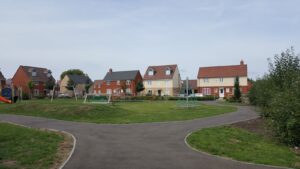We’re getting warmer to understanding wellbeing
The Budget on 23 March is widely predicted to hit the pockets of middle England, threaten new cuts on public spending – against a backdrop of economic decline. Gloomy reading… and, coming at a time when government is working on plans to measure our wellbeing, is this going to lead to a spectacular own goal? Why would politicians choose to measure something that is likely to be moving dramatically in the wrong direction?
But, there is evidence that we may be happier today than we were when the economy boomed. The most recent data on our national ‘subjective wellbeing’ (how we feel about the quality of our lives) shows that our wellbeing has, if anything, gone up. In 2007 the national average answer was 7.3 out of 10. By 2010 this had risen to 7.5. Not a huge change but also not in the downward direction we might expect.
However, whether the UK measures 7 or 7.5 matters if you are interested in international comparisons, but means very little in practice. The interesting data about wellbeing comes at the very local level – looking at how different groups, or people living in different places, experience their lives. We know that wellbeing is affected by factors as diverse as how often we exercise, garden, dance, how much we sleep and talk to our neighbours, and the quality of our relationships in our families, workplaces and communities. In practice local areas can be both materially deprived, and places of strong wellbeing.
At the Young Foundation, we’re fascinated by why it is that some communities report higher quality of life than others; and why some communities seem to be able to bounce back when things go wrong (be that factory closure or flood) whilst others sink into decline. Given the tough economic times that we (and probably will continue to) face, our interest has been primarily in resilience. Why some people and communities manage, even thrive, in the face of adversity and others don’t.
WARM, our new Wellbeing and Resilience Measure was published at the end of last year. It measures assets and vulnerabilities in local communities, how people feel about their lives and how resilient they are to deal with future shocks. The WARM measure has already been trialed in Manchester, Tyneside, Hertfordshire, Birmingham and Salisbury.
WARM paints a very different picture of local areas than conventional deprivation indicators. It captures assets and vulnerabilities, and can help people planning services to decide where to target scarce public money.
WARM is a work in progress. We hope that it will be used to support new emerging area-based programmes – from the Big Local Trust to Nesta’s Neighbourhood Challenge. With the ending of national performance frameworks and prescribed national data, councils and health agencies will still need tools that give them objective information about their priority areas.
WARM can give the sort of information that local communities and agencies need to understand, plan and act, building on their assets. It can help build local knowledge about how people are managing change in their job and income prospects, and how communities are dealing with the impact of economic change and public spending cuts.
The national data about how we are feeling through the recession tells us that our reactions are complex. We need to stay alert to the detail of what people are thinking and what drives their feelings of personal wellbeing, if we are to understand what can help them thrive and prosper in the future.
- Nicola Bacon is the Young Foundation’s director of local and advisory projects.















